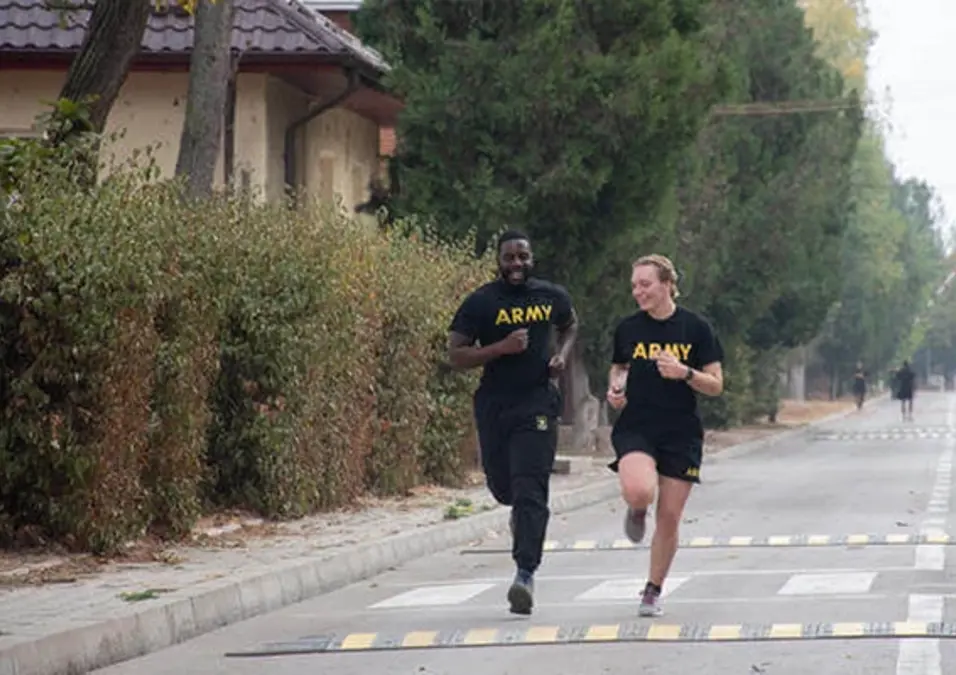The opinions shared in the GymNation blog articles are solely those of the respective authors and may not represent the perspectives of GymNation or any member of the GymNation team.
How to be confident in Military Fitness Tests

SIGN UP FOR YOUR FREE DAY PASS TODAY!
When individuals in the military and tactical professions initially undertake fitness evaluations, they often neglect the importance of pacing and exert maximum effort in each activity, essentially sprinting through the events.
This approach is particularly evident in fitness tests that include two-minute rounds of calisthenics exercises like push-ups, sit-ups, and pull-ups, as well as any running event longer than a mile.
Operating under the misconception that it's possible to give 100% effort throughout, many find themselves quickly fatigued, unable to complete the required time or distance.
To truly perform at your highest potential in a military or tactical fitness test, it's crucial to understand and master the art of pacing, as well as condition your body to sustain a consistent pace across different activities, including sit-ups, running, and swimming.
Consider the inquiry of a police recruit facing a fitness test closely aligned with those of the Navy and Air Force:
Good afternoon. I emailed you about the sit-ups and getting better at them, but I wanted to know how to drop my 1.5-mile time under 11 minutes. I am in the police academy and run 1.5 miles in 11:58 seconds. Thanks, Elijah
Elijah, thanks for the email. The same way you are getting better at sit-ups is how you get better at running. It is all about getting in shape to maintain your pace.
None of this is a sprint, though you should add in sprinting and agility drills into your weekly workouts, as those are two important elements of fitness for military service members and police officers.
Here is a breakdown of typical events that require pacing to score your best:
🔍 Read More: Ready to elevate your fitness journey? Dive deeper with our BMI Calculator, BMR Calculator, TDEE Calculator, and Body Fat Calculator. Uncover the science behind your health!
____________________________________________________________________________________________
Sit-ups
If you want 80 sit-ups in two minutes, you need to learn how to do 20 sit-ups in 30 seconds.
Your workouts are lots of 30-second sets until 20 reps is easy ... then build it up to 40 in one minute. Next thing you know, you are doing 80 in two minutes.
Note: Many groups within the tactical community are removing sit-ups or crunches as part of the fitness testing events and replacing them with the plank pose. Obviously, there is no pacing for planks, just building the necessary endurance for holding that position for 3-4 minutes.
Running
If you are running 1.5 miles in 12 minutes (or eight minutes per mile), your quarter-mile runs are set at two minutes.
So if you want to drop it a minute, that means each lap needs to get faster by 10 seconds. Make your workouts in that time zone -- no slower, no faster -- and learn how to run at that pace for 11 minutes and build up to 1.5 miles. Here is your new goal pace workout sets:
Goal pace: 11 minutes for 1.5 miles (or a 7:20 mile pace); your quarter-mile runs need to be 1:50 to get down to an 11-minute, 1.5-mile timed run. Try this: Repeat 6-8 times.
- Run 400 meters (quarter-mile) at 1:50
- Walk 100 meters between sets
When this gets easy for you, don't try to run faster, learn how to maintain the pace for 800 meters or a half-mile:
Repeat 3-4 times.
- Run 800 meters (half-mile) at 3:40
- Walk 100-200 meters (as needed for recovery)
In a future warm-up or cooldown set, see whether you can run a mile in the goal pace time of 7:20. When you can do this, you are well on your way to achieving your 11 minute, 1.5-mile timed run score.
Pacing is king. Both the run and sit-ups are pacing exercises. You need to get in shape to handle that pace for whatever time or distance your test requires.
The same goes for swimming. If swimming is part of your future fitness tests, you will need to learn how to maintain a steady pace to exceed the standards.
For instance, we typically teach a yard or meter per second when swimming any distance. Typically, these distances range from 100-500 meters in most units that require rescue swimming, diving, or if your jurisdiction is surrounded by water, there may be a swimming portion to your training.
Regardless of your fitness test, there is going to be an event that requires practice in pacing yourself to achieve the highest score possible. Make sure you put in the time, breaking down the pace into smaller chunks and building up to the testing distance. Good luck.
Stew Smith is a former Navy SEAL and fitness author certified as a Strength and Conditioning Specialist (CSCS) with the National Strength and Conditioning Association. Visit his Fitness eBook store if you're looking to start a workout program to create a healthy lifestyle. Send your fitness questions to stew@stewsmith.com.
Source: military
GET YOUR FREE TRIAL TODAY

















































































